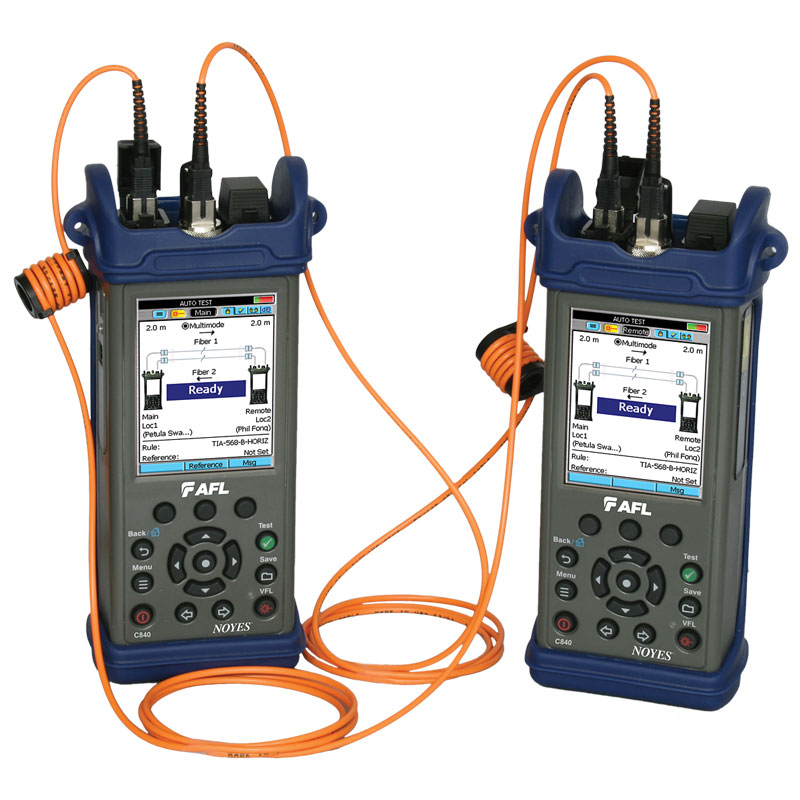Best practices for maximizing the performance of fibre testing equipment
Wiki Article
All You Need to Understand About Robotic Vision and Its Applications in Advanced Optical Measurement Systems
Robotic vision represents a substantial innovation in the junction of computer system vision, synthetic knowledge, and artificial intelligence. This technology enhances the accuracy of optical measurement systems, making it possible for real-time data evaluation and boosted high quality control. Its effect covers multiple markets, from making to medical care. The advancing landscape of robot vision increases inquiries regarding future abilities and applications. What advancements exist in advance in this transformative field?Comprehending Robotic Vision: Trick Concepts and Technologies
Robotic vision includes the innovations and methodologies that allow machines to analyze and comprehend visual information from their environment. This area incorporates elements of computer system vision, expert system, and maker understanding to facilitate automatic decision-making based upon aesthetic information. Secret ideas include photo processing, which includes the improvement and analysis of photos to draw out purposeful features, and things recognition, which enables equipments to determine and categorize things within a scene.
The Assimilation of Robotic Vision With Optical Measurement Systems
As markets significantly demand precision and effectiveness, the assimilation of robot vision with optical measurement systems has arised as a transformative strategy. This harmony allows robots to view and translate their environments, boosting the capability of optical measurement systems to evaluate and examine items with unparalleled accuracy. By gearing up optical sensors with sophisticated imaging modern technologies, robot vision makes it possible for real-time information collection and handling, assisting in instant changes to dimension parameters.Additionally, the combination equips automated systems to find variants in measurements, surface area high quality, and positioning, which are important in top quality control procedures. Improved algorithms, such as device learning, further boost this assimilation by enhancing the systems' ability to adapt to different environments and circumstances. The assimilation not only streamlines dimension processes however also decreases errors, making certain that products fulfill strict sector requirements, thereby strengthening the duty of robotic vision in the future of optical dimension systems.
Applications of Robotic Vision in Manufacturing
In modern-day manufacturing atmospheres, making use of vision systems has revolutionized production procedures by allowing makers to perform jobs with amazing accuracy and rate. Robotic vision systems are increasingly utilized for quality control, where they check items for defects and assurance adherence to specifications. These systems use cameras and advanced algorithms to examine items in real-time, considerably decreasing the threat of human mistake.Additionally, robotic vision helps with automation in production line, permitting robotics to accurately identify components and assemble them with very little downtime. This innovation additionally boosts supply management, as vision systems can monitor stock levels and discover inconsistencies, assuring a smooth supply chain.
In addition, robot vision help in the execution of clever manufacturing facilities, where information from vision systems can be incorporated with various other modern technologies to maximize process. In general, the applications of robotic vision in manufacturing show its essential duty in improving effectiveness, quality, and productivity throughout different industries
Robotic Vision in Healthcare: Revolutionizing Person Treatment

In rehabilitation, robot vision aids in checking client progression and customizing therapy sessions to private demands. It sustains physician by automating jobs such as information collection and patient monitoring, permitting more time to concentrate on direct person interaction. Additionally, robotic vision enhances telemedicine by making it possible for remote medical diagnosis and virtual appointments, linking the void in between individuals and doctor. In general, the application of robotic vision in medical care is changing individual care, leading to boosted results, efficiency, and person contentment.
Future Patterns and Developments in Robotic Vision Modern Technology
The fast evolution of robot vision technology assures to additionally enhance its applications throughout various fields, including medical care. Future patterns show a considerable change towards including synthetic knowledge and device understanding, allowing systems to find out from large datasets and boost accuracy gradually. Boosted sensor modern technologies and deep learning algorithms are anticipated to refine item acknowledgment capabilities, enabling robotics to interpret complex atmospheres more efficiently.
In addition, the integration of enhanced truth (AR) with robot vision will likely revolutionize how robots help in procedures and diagnostics. This harmony will facilitate real-time data visualization, enhancing decision-making processes. Furthermore, miniaturization of elements will cause even more small and flexible robot vision systems appropriate for a range of jobs. As these improvements unravel, markets will witness enhanced automation and effectiveness, solidifying robotic vision as a cornerstone of innovative technological solutions.
Frequently Asked Inquiries
What Are the Key Elements of a Robotic Vision System?
The major parts of a robot vision system include electronic cameras for picture capture, cpus for information analysis, algorithms for analysis, and actuators for activity. With each other, these components make it possible for robots to perceive and interact with their setting effectively.How Does Robotic Vision Improve Precision in Measurements?
Robotic vision improves measurement precision by using advanced imaging technologies, making it possible for exact object discovery and spatial evaluation. This capability lowers human error, enhances repeatability, and permits for real-time modifications, ultimately boosting general dimension dependability and efficiency.What Industries Advantage Many From Robotic Vision Innovation?
Numerous industries benefit substantially from robotic vision innovation, consisting of production, healthcare, agriculture, and logistics. These markets make use of enhanced precision, effectiveness, and automation, causing boosted productivity and decreased operational expenses in their corresponding procedures.Can Robotic Vision Equipments Work in Low-Light Conditions?
Robotic vision systems can certainly work in low-light problems, making use of innovative sensing units and formulas to boost photo clarity. This capability allows them to carry out successfully in different atmospheres, including industrial and monitoring applications, even with very little illumination.What Are the Costs Associated With Implementing Robotic Vision?
The costs associated with implementing robotic vision differ substantially, affected by elements such optical measurement system as cams, software application, and integration. Additional expenditures consist of upkeep, training workers, and prospective upgrades to existing systems, which can build up in time.Report this wiki page